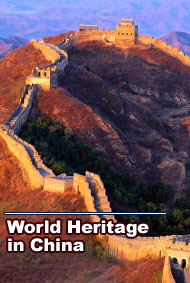
|
|
|
South China Karst Be A Part of World Natural Heritage
The South China Karst, which is made up of the stone forest in Yunnan Province, Libo County in Guizhou Province, and Wulong County in Chongqing City, was inscribed on UNESCO's World Heritage List Wednesday. The site nomination was approved by the ongoing 31st World Heritage Committee's annual meeting, which convened in Christchurch,New Zealand Saturday. The 10-day conference will also review sites in danger, site management and protection, and will acknowledge national tentative lists for possible future World Heritage sites. Forty nominations for new sites will be debated during this meeting. In 1972, the United Nations Educational, Scientific, and Cultural Organization (UNESCO) adopted the World Heritage Convention as a way to encourage the identification, protection, and preservation of the world's most outstanding cultural and natural heritage sites. With 183 member countries and more than 800 sites, it is one of the most widely supported United Nations conventions. What is Karst? Distinctive associations of third-order, erosional landforms indented into second-order structural forms such as plains and plateaus. They are produced by aqueous dissolution, either acting alone or in conjunction with (and as the trigger for) other erosion processes. Karst is largely restricted to the most soluble rocks, which are salt, gypsum and anhydrite, and limestone and dolostone. The essence of the karst dynamic system is that meteoric water (rain or snow) is routed underground, because the rocks are soluble, rather than flowing off in surface river channels. It follows that dissolutional caves develop in fracture systems, resurging as springs at the margins of the soluble rocks or in the lowest places. A consequence is that most karst topography is "swallowing topography," assemblages of landforms created to deliver meteoric water down to the caves.
|